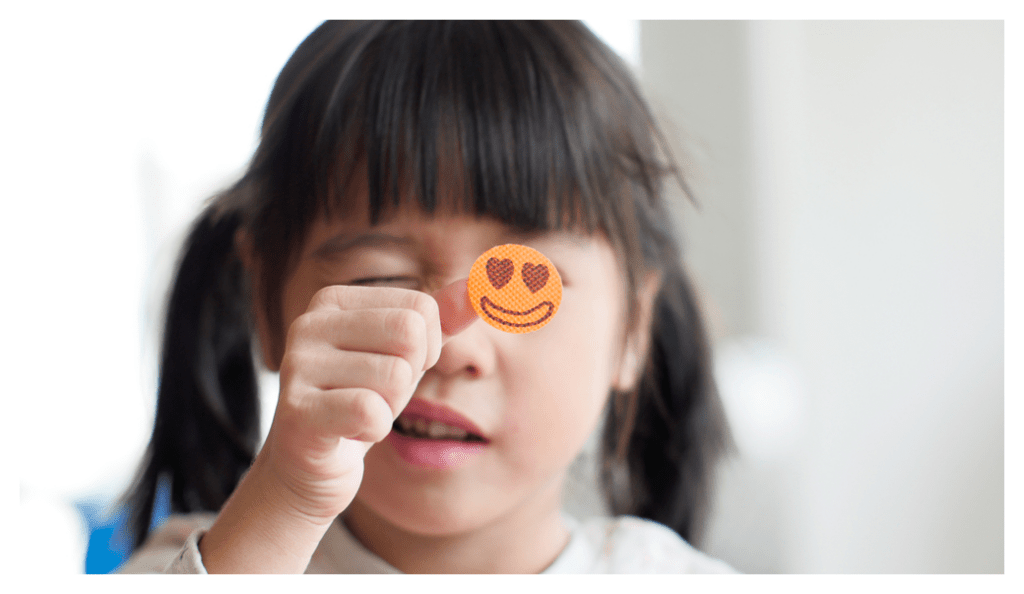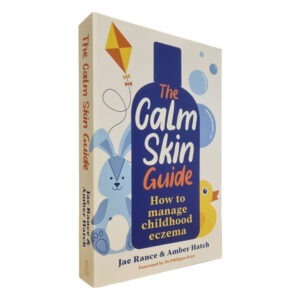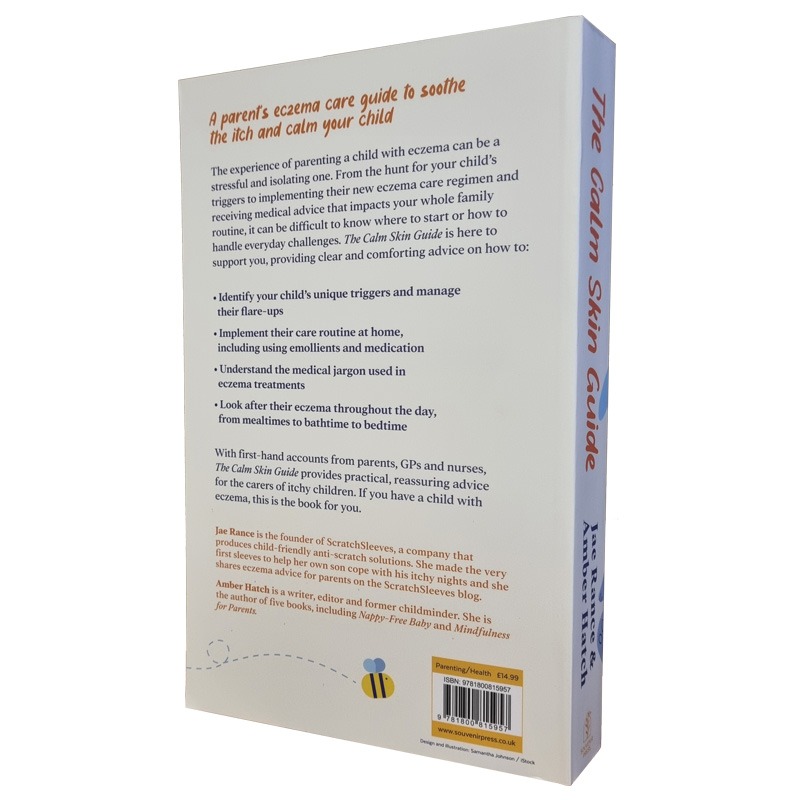Using sticker charts to stop children scratching eczema



As tempting as it may be to scratch, it will only make eczema worse. It’s difficult as an adult to resist the temptation to scratch, so almost impossible for a child. However, stopping your child from scratching will make a big difference to their eczema, so it’s worth exploring different ways to distract them from the itch. In this article, we look at how to use sticker charts to stop children scratching their eczema.
For parents of young children, a sticker chart can be particularly effective as it’s an easy and immediate way to say ‘well done’ to your child when they become conscious of their scratching and stop doing it. It involves nothing more than downloading our free printable sticker chart and explaining to your child what they need to do to receive their reward. You can make it more fun by rewarding your child when they have earned a given number of stickers.
Stickers are a great way to praise the process, not the result, which is a key element to building self-esteem in your child. Self-esteem can take a knock when you suffer with eczema, not least because it can be such a visible condition. Self-esteem is about feeling liked and confident and able to think good things about yourself, so feeling in control of eczema is much more powerful for your child than thinking the condition controls them.
Over time, the goal is to help your child to become more independent about managing their own eczema as this will help them when you are not around, such as when they are out with friends or at school.
Why sticker charts work
Each child will respond differently to the use of a sticker chart. It’s a straight-forward method to use to help you manage a single issue, like eczema, as your child will soon learn exactly what’s required of them in order to achieve their reward.
The real power of sticker charts is the tangible and immediate recognition. The sticker serves as a physical reminder of recognition and praise received. The building up of stickers on their chart is a visual measure of their achievements and gives you a chance to make a big fuss about how well they have done.
You can download our free printable sticker chart here.

Sticker charts are good for parents too!
Sticker charts are as much for you as they are for your child because they remind you to praise good behaviour straight away. Remember to keep the sticker chart in the kitchen or hallway, somewhere you visit regularly, as this will remind you (and your child) to use it! One of the most common causes of sticker chart failure is when the parents forget about it. If you forget to give your child the sticker they have earned, or fail to give it to them at a later date, the sticker chart is likely to be much less effective.
Another benefit of a sticker chart from a parent’s point of view is that it is an effective way to keep your cool with an itchy child.
Using sticker systems to reward NOT doing things
While it’s easy to hand out stickers when your child displays the behaviour you want to reinforce, it’s not quite so clear cut when you need to instigate a habit of not doing something, like scratch an itchy patch of skin. One approach is to recognise the times when your child is likely to itch and to come up with an alternative, acceptable thing to do instead. That way, you can hand out stickers when they resist the temptation to itch. An example could be finding a fiddly toy to play with while they are watching TV or tapping an itch rather than scratching it.
Read our top tips to stop your child from scratching for more ideas. These techniques will enable you to provide your little one with coping strategies rather than just asking them to stop doing something without telling them how.
Another approach is to identify specific time periods to focus on not scratching, such as at bedtime, bath time, whilst watching TV or during car journeys; or you could focus on one particularly itchy patch and award stickers for not scratching that area.
As with all sticker systems, to keep you little one engaged you’ll need to start with small, clearly achievable goals – maybe just 15 seconds tapping an itch rather than scratching is challenging enough to start with. It’s worth noting that younger children need more frequent rewards to hold their attention. Whatever system you come up with, make sure that your child understands it and you can evolve it slowly.
Tips for success with sticker charts
- Give praise, praise and even more praise
- Stick to one issue and be realistic
- Involve your child right from the start, they must want to tackle the issue and understand how the sticker chart is going to work
- Help your little one as much as you can (without actually doing the work yourself)
- Be sure to give stickers immediately
- Remember to review the chart frequently and celebrate the building successes
- Evolve the goals to establish the new behaviours and then gradually phase out the sticker chart
- Don’t take stickers away – lack of reward will be more than enough
Best age for sticker charts
This, not very helpfully, depends on the child in question. A good guideline is that reward charts should work for children aged between 3 and 8. The lower limit is down to children just not being able to control their behaviour effectively until they are about 3; the upper limit is more child dependant, with older kids losing interest in this type of micro-reward system.
The more important things to consider are whether the child is capable of not scratching, whether they understand why they shouldn’t scratch and whether they have the capacity to control their behaviour yet. If the child isn’t ready, then a sticker chart won’t work.
If your child is too mature for a sticker chart, then try alternative rewards. A short extension to their usual bedtime, or the chance to do something fun with you, are both simple ways to reward your child.
How to make sticker charts work for you: the 4 ‘P’s
Planning
Make sure you are clear about what you want to achieve. Discuss it with your partner and anyone else involved in your child’s care – your nursery, school, grand-parents, child-minders, friends your child spends a lot of time with – to make sure that you can all be consistent. Ensure you have thought through how you want your sticker system to work and what rewards you want to use (more on this later). You also need to involve your child as without their understanding and buy-in, a sticker chart just isn’t going to work.Praise
This is the bit that makes sticker charts work. From your child’s point of view, the stickers themselves should be an incidental benefit and a way of measuring the amount of the praise they have had. Every time they achieve a goal make a really big thing of how well they have done before you give them the sticker. Big hugs, high fives, tummy tickles, sloppy kisses, silly dances, whatever works for you. Then repeat the production when they have stuck the sticker in place – although maybe with slightly less gusto! If you start running out of ways to say well done – check out our list of 50 ways to say ‘Good work’ below.Being Positive
When you are trying to break a habit or teach a new behaviour you will need to help you child along the way by providing distractions and coping mechanisms (e.g. tapping itches, using a cold compress or finding a toy to fiddle with). It’s also easier for everyone to focus on the ‘good’ stuff if you use positive rather than negative words: instead of saying ‘Stop scratching’ try ‘That itch is bothering you – what shall we do to take you mind off it?’ You could also come up with a silly ‘secret signal’ to remind them not to scratch. When goals aren’t achieved, give a conciliatory hug and ask them how you can help next time – you might be surprised at the answer.Patience
We all know that learning a new behaviour is hard, but it will be worth the effort. As a rule of thumb, it takes at least 21 days to break a habit.
Stickers, rewards and their pitfalls
Stickers lose their value quickly so unless they are a way of earning other rewards or prizes, your child is likely to lose interest. It usually works best to have frequent, small rewards for collecting around 4 or 5 stickers. This is especially true when you are starting out with a sticker chart as it helps children get used to the idea that making the effort to do something is worthwhile. It is also true with younger children who have little concept of time.
The prizes you choose are up to you but should depend in part on the effort involved in earning them and what really interests your child. Involving kids in choosing the reward or prize they are working towards is also a good motivator.
Here are a few ideas:
- Family time – this could be as simple as an extra story at bedtime, their choice of what to have for the family’s dinner or full-on family outing (although make sure that you do actually have time before you promise!)
- Building up toy collections – Lego, train sets, dolls house furniture, dolls clothes are all good candidates for this type of prize, although the lack of variation can mean kids loss interest relatively quickly
- Treasure box – fill a small box with little toys like balloons, pens, craft supplies and party-bag presents and let your little one chose form the box each time they earn enough stickers. It’s a good idea to feed in new items regularly to keep the box interesting.
- Voucher book – make up a book of vouchers for trips to the local soft play area or swimming pools, new books, time playing computer games, a DVD from the local library…. You can involve your child in coming with treat ideas and drawing pictures to go on the vouchers.
Moving on
If you are really lucky, your little one will have learnt to stop scratching their eczema and lost interest in their sticker charts without any other action from you. If they don’t move on by themselves, try not to suddenly stop using a sticker chart. Stopping suddenly makes it much more likely that your child will go back to scratching as much as before.
There are a number of ways to move away from a sticker system: you could gradually increases the length of time between stickers by making the goals longer; or slowly increase the number of stickers needed to gain prizes; or even phase out the stickers in favour of just giving the praise; or, if you have gone down enthusiastic praise route in a big way, gradually reduce the enthusiasm of the goal celebrations.
These ideas really helped us, what is your experience of using sticker charts to stop children scratching eczema?
Here at ScratchSleeves we don’t just share our experiences of bringing up an eczema child and favourite allergy friendly recipes, we also manufacturer and sell our unique stay-on scratch mitts and PJs for itchy babies, toddlers and children. We now stock sizes from 0-adult years in a range of colours. Visit our webshop for more information.
The Calm Skin Guide
Love our blog? It's also available in book format with:
- First hand accounts from parents & medical professionals
- Easy navigation
- Comprehensive index
- Additional material
Signed copies available at no extra cost
Written by:
Interesting article? Don't keep it to yourself...
Read next...
You may also find helpful...
Quick buy


Multi Buy Discount

Spend between £30 - £60 and save 5%
Spend between £60 - £120 and save 10%
Spend over £120 and save 15%
Discount automatically applied at checkout
No Quibbles Guarantee

ScratchSleeves abide by a no quibbles guarantee.
Free UK Postage

Free packing and postage on all UK orders. For overseas orders to Europe postage is from £3.50, to USA is £6.50 and to the rest of the world, from £3.75.






